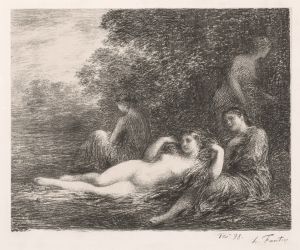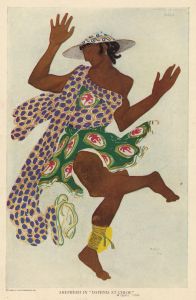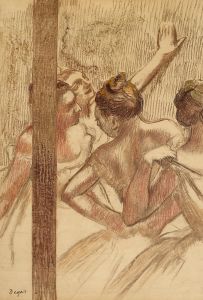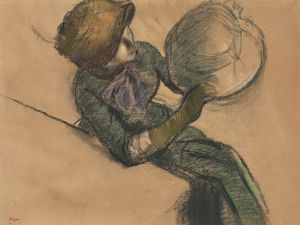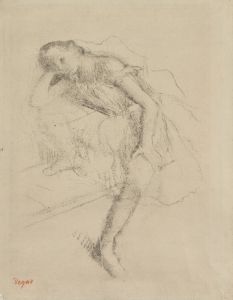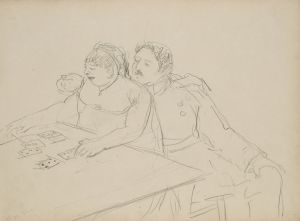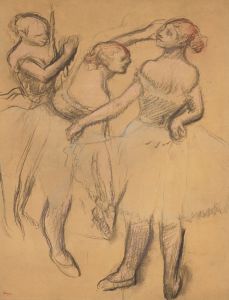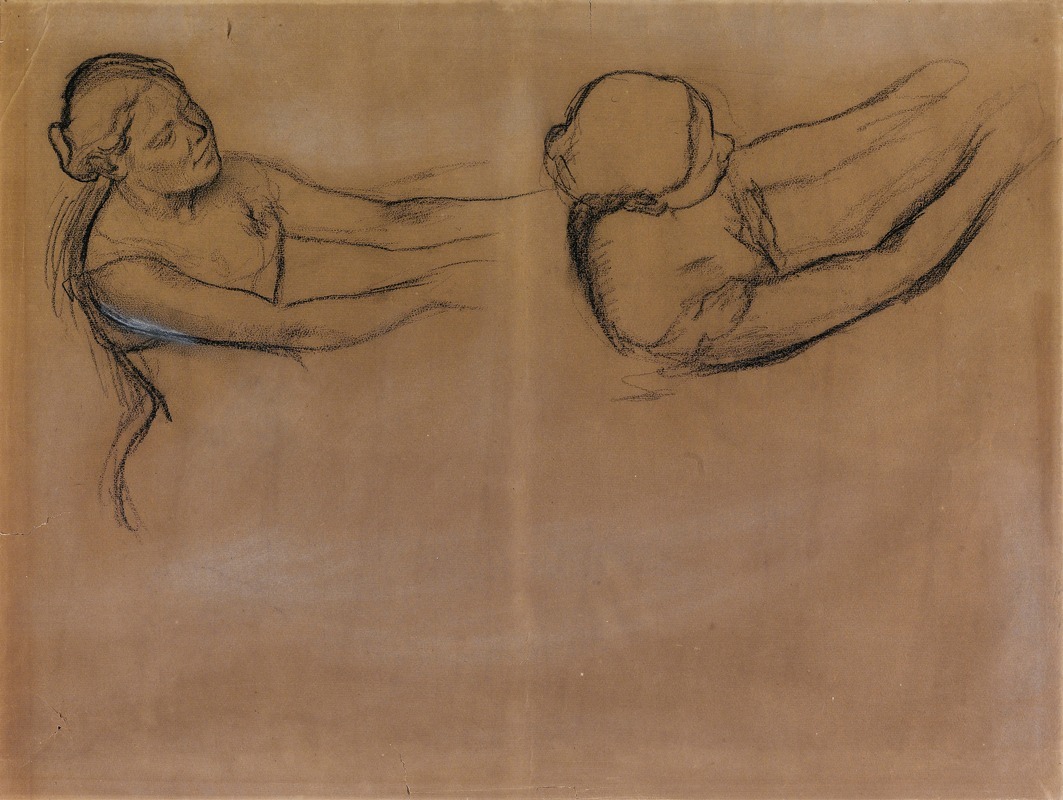
Deux Danseuses
A hand-painted replica of Edgar Degas’s masterpiece Deux Danseuses, meticulously crafted by professional artists to capture the true essence of the original. Each piece is created with museum-quality canvas and rare mineral pigments, carefully painted by experienced artists with delicate brushstrokes and rich, layered colors to perfectly recreate the texture of the original artwork. Unlike machine-printed reproductions, this hand-painted version brings the painting to life, infused with the artist’s emotions and skill in every stroke. Whether for personal collection or home decoration, it instantly elevates the artistic atmosphere of any space.
"Deux Danseuses" (Two Dancers) is a notable work by the French artist Edgar Degas, who is renowned for his depictions of ballet dancers. Degas, a prominent figure in the Impressionist movement, frequently explored themes of dance, capturing the grace and dynamism of ballet through his unique artistic lens. His works often provide an intimate glimpse into the world of ballet, showcasing both the elegance and the rigorous discipline of the dancers.
Created in the late 19th century, "Deux Danseuses" exemplifies Degas's fascination with movement and his innovative approach to composition. The painting typically features two ballet dancers, often depicted in a moment of rest or preparation, rather than in the midst of a performance. This choice reflects Degas's interest in the behind-the-scenes aspects of ballet, offering viewers a more personal and candid perspective.
Degas's technique in "Deux Danseuses" is characterized by his use of pastels, a medium he favored for its ability to convey texture and light. Pastels allowed Degas to achieve a softness and immediacy in his work, capturing the delicate fabrics of the dancers' costumes and the subtle play of light on their figures. His mastery of this medium is evident in the way he renders the dancers' tutus and the nuanced expressions on their faces.
The composition of "Deux Danseuses" is notable for its asymmetry and unconventional cropping, elements that Degas often employed to create a sense of spontaneity and movement. This approach was influenced by his interest in photography and Japanese prints, both of which informed his exploration of new perspectives and framing techniques. The result is a dynamic and engaging composition that draws the viewer into the intimate world of the dancers.
Degas's portrayal of dancers was not merely an aesthetic choice but also a reflection of his broader interest in the human form and movement. His works often reveal a deep understanding of anatomy and a keen observation of the subtleties of human posture and gesture. In "Deux Danseuses," this is evident in the naturalistic depiction of the dancers' poses and the attention to detail in their musculature and expressions.
Throughout his career, Degas created numerous studies and variations on the theme of dancers, making it one of the most significant aspects of his oeuvre. "Deux Danseuses" is part of this larger body of work, which includes paintings, drawings, and sculptures. These works collectively offer a comprehensive exploration of the world of ballet and have contributed significantly to Degas's reputation as one of the foremost artists of his time.
Today, "Deux Danseuses" and other works by Degas continue to be celebrated for their innovative approach and enduring beauty. They are housed in major art collections around the world, where they are appreciated by audiences for their technical mastery and the unique insight they provide into the world of 19th-century ballet.






